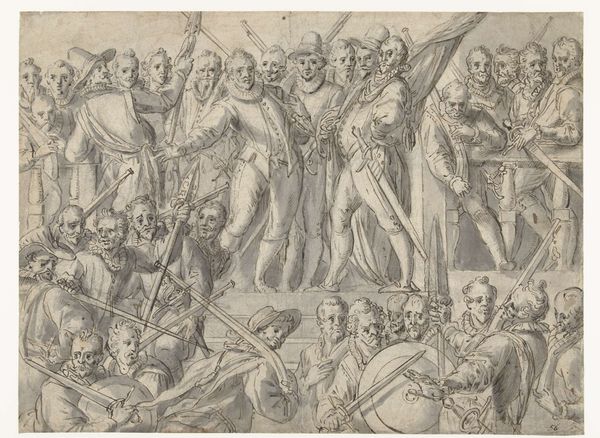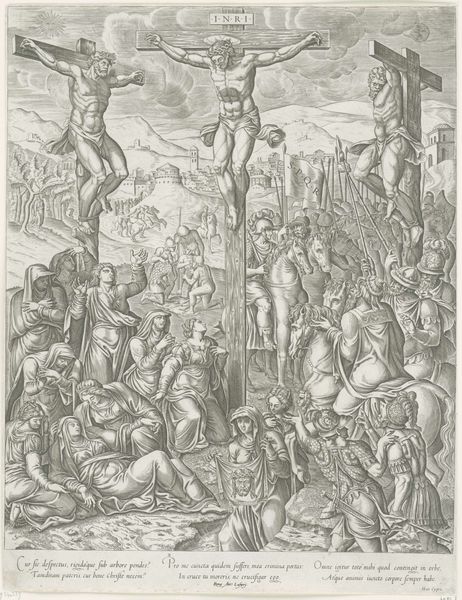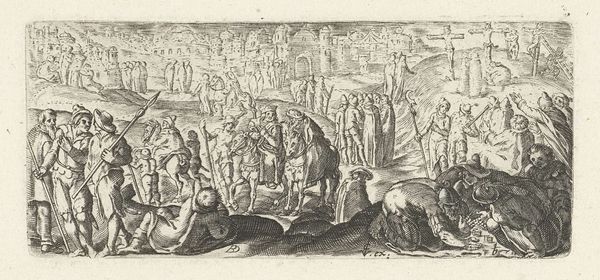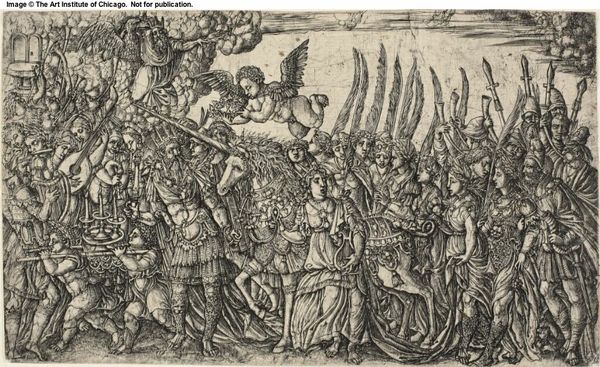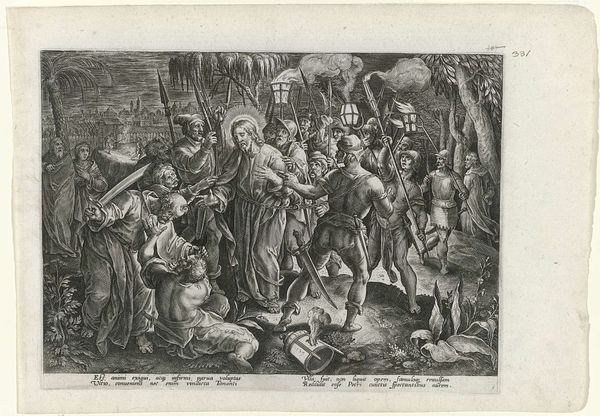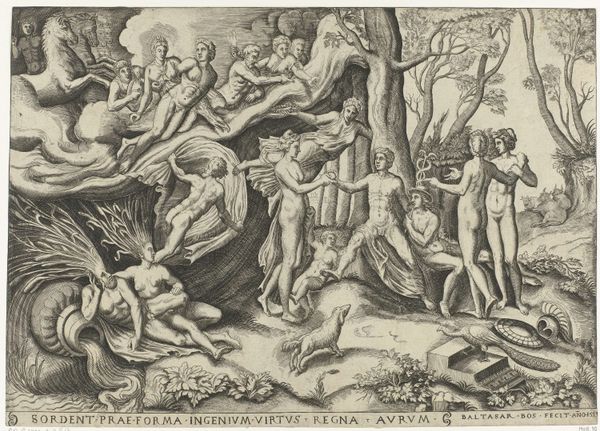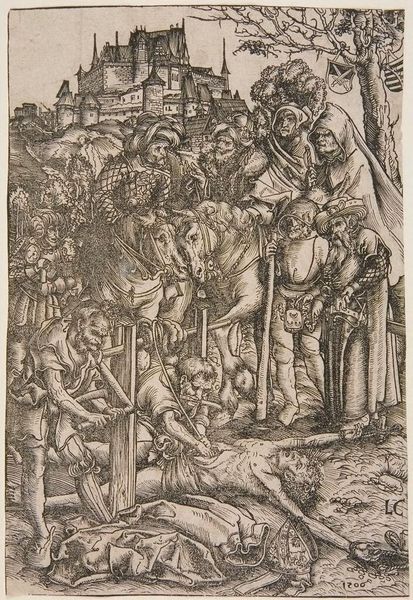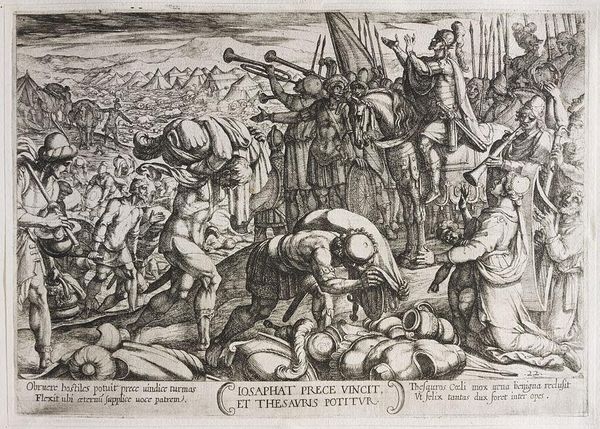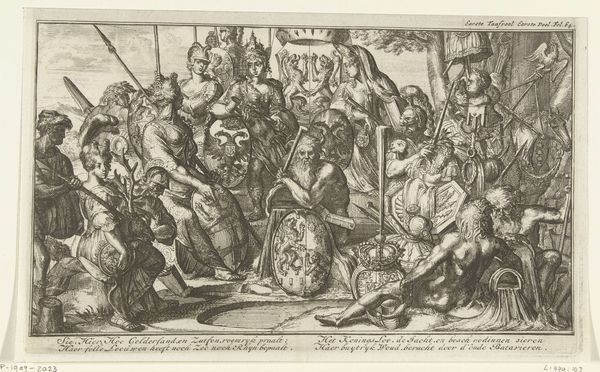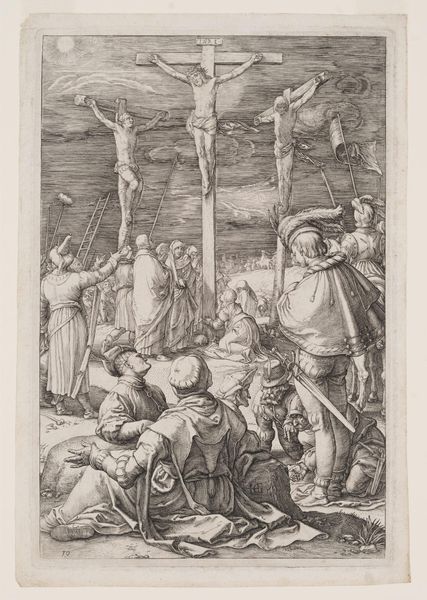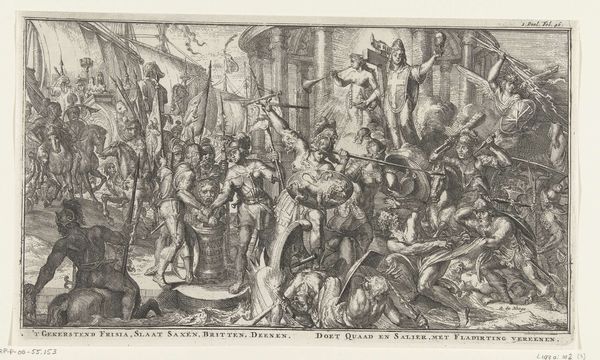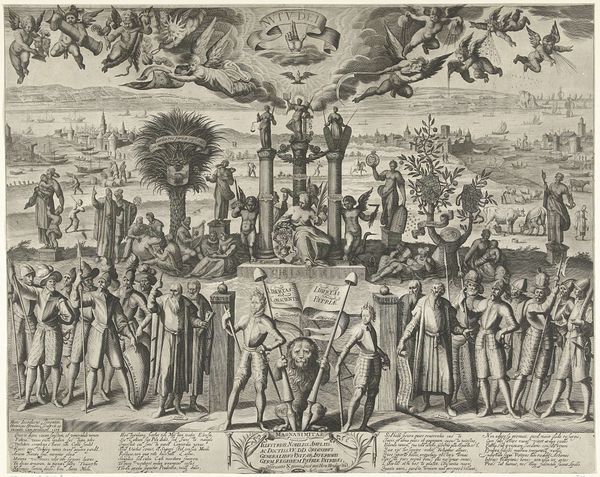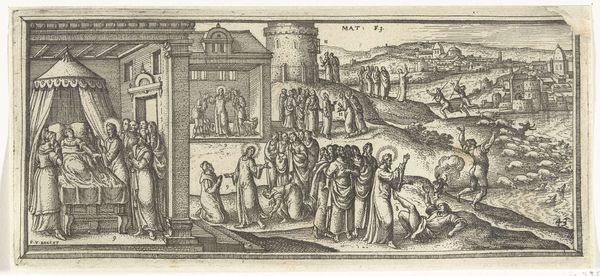
print, engraving
# print
#
figuration
#
history-painting
#
northern-renaissance
#
engraving
Dimensions: height 194 mm, width 264 mm
Copyright: Rijks Museum: Open Domain
Philips Galle made this print, Christus aan het kruis, sometime in the 16th century. The printmaking process is fascinating; Galle most likely used an engraving technique to make this image of the crucifixion. The linear quality, the stark contrast between light and dark, it's all a direct result of the artist physically carving lines into a metal plate, applying ink, and then transferring that image to paper. This was not a quick process, each line meticulously placed, demanding patience, skill, and precision. Prints like these were commercial objects; they were made to be distributed and consumed. Galle’s workshop, like others in Antwerp, was a well-oiled machine, churning out prints for a growing market. The printmaking process itself becomes a metaphor for labor, production, and the dissemination of ideas in a rapidly changing world. The very act of creating it is intertwined with social issues of labor and religious distribution. Paying attention to the material, the making, and the context allows us to move beyond just the religious imagery and to understand the social and economic forces at play in its creation.
Comments
No comments
Be the first to comment and join the conversation on the ultimate creative platform.
